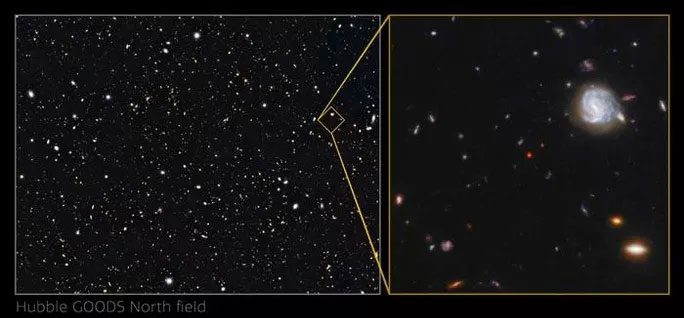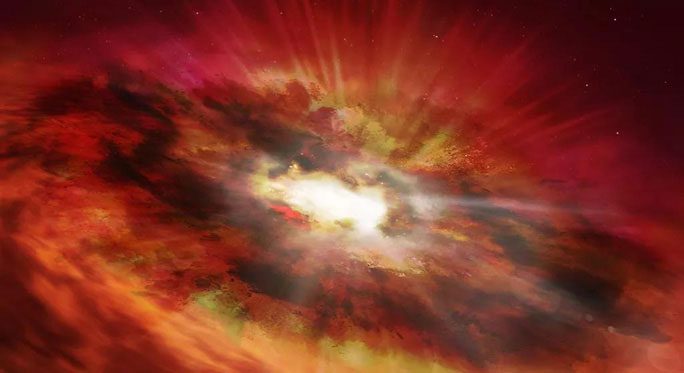Images from over 13 billion years ago of an ancestor of supermassive black holes have been captured by NASA/ESA’s Hubble Space Telescope.
According to a recently published article in the scientific journal Nature, this ancient object displays characteristics “in between” a massive dust cloud, a star-forming galaxy, and a type of “light-emitting” black hole known as quasar.
Originating in an era referred to as the “cosmic dawn”, this object represents the first direct evidence of a primordial galaxy intertwined with the foundations of a supermassive black hole.

Graphic depiction of the ancestor of supermassive black holes – (Image: HUBBLE/NASA/ESA).
This is the legendary “monster” that has been described in astronomical theories but has never been observed, provisionally referred to as “transitional red quasar.”
According to Live Science, lead author Seiji Fujimoto from the Niels Bohr Institute at the University of Copenhagen (Denmark) stated: “The discovered object connects two rare celestial populations, providing a new pathway to understand the rapid development of supermassive black holes in the early universe.”

Actual image of the black hole 13 billion years ago – (Image: HUBBLE/NASA/ESA)
Supermassive black holes are what astronomers commonly refer to as “supermassive black holes,” with masses ranging from hundreds of thousands to billions of times that of the Sun.
Evidence suggests that our early universe was like a “Jurassic Park,” filled with the largest cosmic monsters, potentially much greater than the current generation of black holes and other “monster” objects.
According to Science Alert, the newly discovered supermassive black hole is named GNz7q, which formed just 750 million years after the Big Bang, aligning with theoretical predictions about the ancestors of supermassive black holes.
Since this object is over 13 billion light-years away, the images captured by Hubble are actually “time-traveling” snapshots of the past, over 13 billion years ago, when the “monster ancestor” GNz7q was just born and thriving.





















































